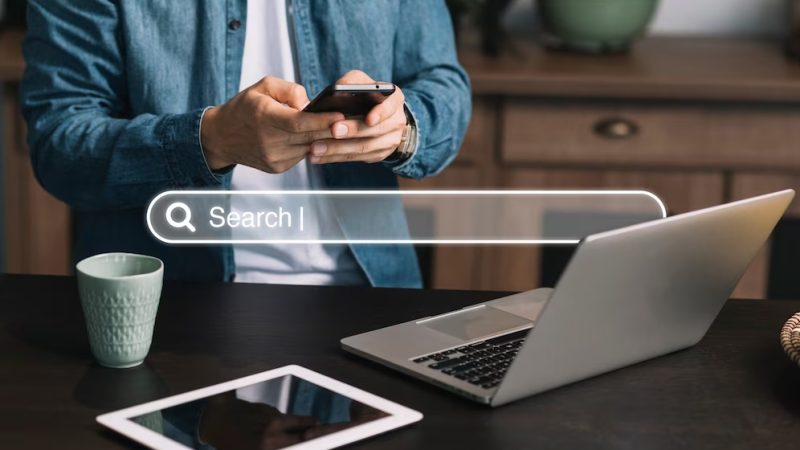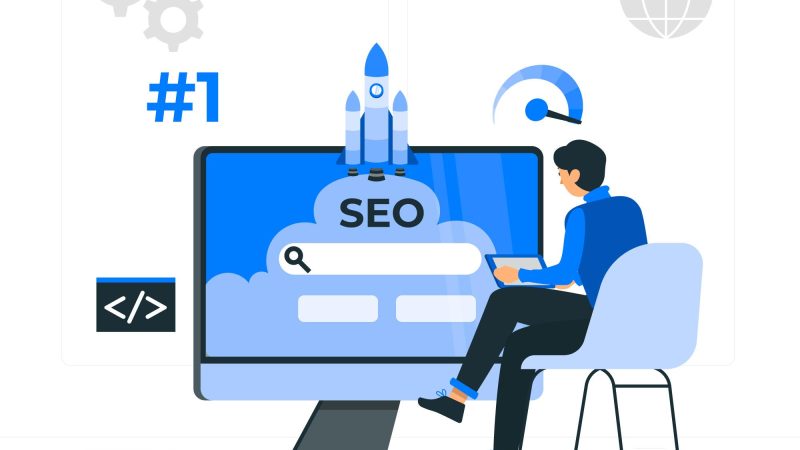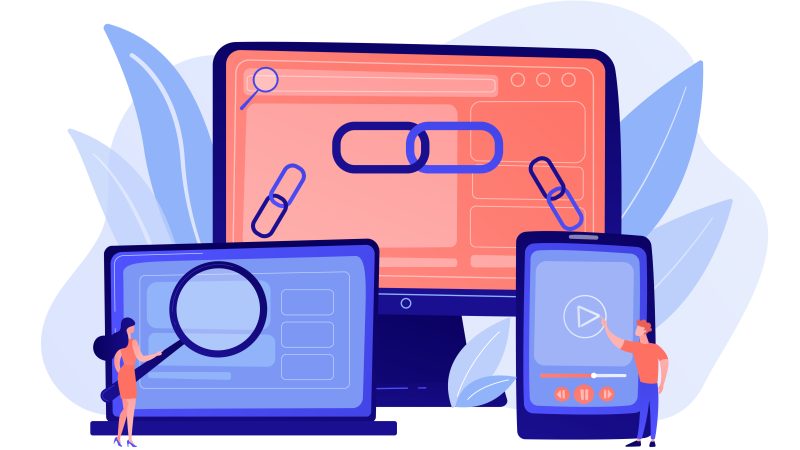Improving Your Webite’s SEO By Improving Accessibility

Website accessibility and search engine optimization (SEO) are two critical aspects of creating an effective online presence. While they may seem unrelated at first glance, the truth is that they share a deep connection.
The Connection Between SEO and Accessibility
At its core, Search Engine Optimisation aims to enhance a website’s visibility on search engine results pages (SERPs), making it easier for users to find relevant content. To achieve this goal, search engines like Google employ complex algorithms that consider various factors when ranking websites. These factors go beyond keywords and backlinks; they also encompass the user experience.
This is where website accessibility comes into play. Accessibility focuses on making websites usable for all individuals, including those with disabilities. To create an accessible website means ensuring that everyone, regardless of their abilities, can access and navigate your content seamlessly.
The intersection between website accessibility and SEO occurs because search engines reward websites that provide a superior user experience. An accessible website is typically more user-friendly, and as a result, it often ranks higher in search results. Additionally, as accessibility principles encourage clear, well-structured content, they align with many SEO best practices.
Optimizing Images
One of the fundamental aspects of website accessibility and SEO is optimizing images. Images are an integral part of web content, but they can pose challenges for both search engines and users with visual impairments.
For SEO purposes, optimized images can improve your website’s load time, which is a crucial ranking factor. Search engines prefer websites that load quickly because faster websites provide a better user experience. Slow-loading websites tend to have higher bounce rates, which can negatively impact SEO rankings.
Moreover, image optimization involves providing descriptive information about each image using alt text (alternative text). Alt text serves as a textual description of the image and is vital for accessibility. Screen readers, which are assistive technologies used by visually impaired individuals, rely on alt text to convey the content of images.
When optimizing images, consider the following:
- Use descriptive file names that reflect the image content.
- Create concise and meaningful alt text that describes the image accurately.
- Compress images to reduce file sizes without sacrificing quality.
By following these practices, you’ll not only improve your website’s SEO but also make it more accessible to a broader audience.
In the following sections, we will delve into more essential SEO practices that also enhance website accessibility, further strengthening the connection between these two vital aspects of web development.
Using Proper Heading Tags
Another critical aspect of creating an accessible website while boosting SEO is the appropriate use of heading tags. Heading tags (H1, H2, H3, etc.) are HTML elements used to structure content hierarchically. They serve as signposts, guiding users through your content and conveying its organization.
From an accessibility standpoint, clear and well-structured headings are essential for users who rely on screen readers. These assistive technologies interpret heading tags to provide an overview of the page’s structure, allowing users to navigate and understand the content more effectively.
In terms of SEO, search engines also pay close attention to heading tags. Properly structured headings signal the content’s hierarchy and topic relationships, making it easier for search engines to understand and index your content accurately. This, in turn, can improve your website’s ranking in search results.
To use heading tags effectively:
- Use H1 tags for the main page title or headline.
- Use H2 tags for subsection titles, breaking down the content.
- Employ subsequent tags (H3, H4, etc.) to further divide content within subsections.
By adhering to these best practices, you’ll enhance both the accessibility and SEO-friendliness of your website.
Creating Descriptive Alt Text
We’ve touched on the importance of alt text in the context of image optimization, but it’s worth emphasizing further. Alt text plays a crucial role in accessibility and SEO, especially when applied to non-text elements beyond images, such as multimedia content and graphical elements.
From an accessibility perspective, alt text provides context to users with disabilities, particularly those using screen readers. It describes what the non-text element conveys, ensuring that everyone can understand and engage with your content.
For SEO, alt text serves as an additional source of information for search engines. When search engine crawlers encounter images or other non-text content, they rely on alt text to determine the content’s relevance to specific search queries. Well-crafted alt text can help your images and multimedia content appear in relevant search results.
Here are some tips for creating descriptive alt text:
- Be concise but informative, summarizing the content or function of the element.
- Avoid using generic phrases like “image” or “picture.”
- Include relevant keywords when appropriate, but prioritize clarity and accuracy.
By consistently providing descriptive alt text for all non-text elements on your website, you’ll improve its accessibility and enhance its SEO potential.
Semantic HTML and ARIA Roles
Semantic HTML and Accessible Rich Internet Applications (ARIA) roles are essential tools for creating websites that are both accessible and SEO-friendly. Semantic HTML elements like <nav>, <header>, <article>, and <footer> convey the meaning and structure of content, benefiting users with disabilities and search engines alike.
ARIA roles, on the other hand, extend the capabilities of HTML by providing additional accessibility information to assistive technologies. They are especially useful for making complex web applications more accessible.
When using semantic HTML and ARIA roles:
- Choose the appropriate HTML elements to represent content (e.g., use <nav> for navigation menus).
- Apply ARIA roles when necessary to provide additional accessibility information.
- Ensure proper nesting and hierarchy of HTML elements to maintain structure.
By incorporating semantic HTML and ARIA roles into your web development process, you’ll create websites that are not only accessible but also well-optimized for search engines. These practices enhance both user experience and search engine rankings, reinforcing the connection between accessibility and SEO. Implementing more complex optimisations to your website may require bringing an SEO consultant on board to make the desired changes.
Mobile-Friendly Design
Mobile devices are a dominant platform for internet browsing. Ensuring that your website is mobile-friendly is not only a crucial aspect of website accessibility but also a significant factor in SEO. Search engines like Google prioritize mobile-friendly websites in their rankings, as they provide a better user experience for the growing number of mobile users.
To create a mobile-friendly website that benefits both accessibility and SEO:
- Implement responsive web design that adapts to various screen sizes and devices.
- Optimize page load times for mobile users by compressing images and minimizing unnecessary code.
- Ensure that touch elements, such as buttons and links, are adequately spaced to prevent accidental clicks.
By prioritizing mobile-friendliness, you not only improve the accessibility of your website but also boost its chances of ranking higher in search engine results when users search from mobile devices.
Your website will become more inclusive, ensuring that all users, including those with disabilities, can access and engage with your content. Simultaneously, search engines will reward your efforts with improved rankings, ultimately driving more organic traffic to your site.
Remember that accessibility and SEO are ongoing endeavors. As technology evolves and web standards change, it’s essential to stay up-to-date with the latest best practices and continue optimizing your website for both accessibility and search engine performance. By doing so, you’ll create a more inclusive web and increase your website’s visibility and reach.
- Additional Resources
To further enhance your knowledge of website accessibility and SEO, here are some additional resources:






